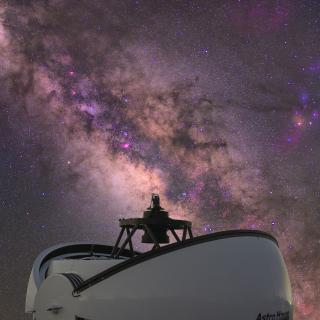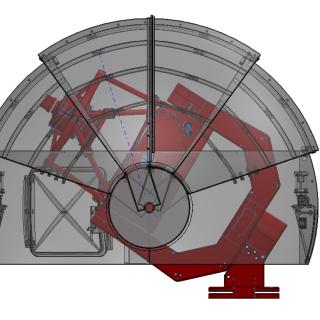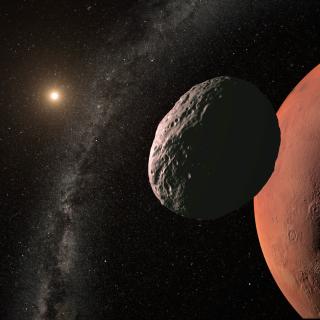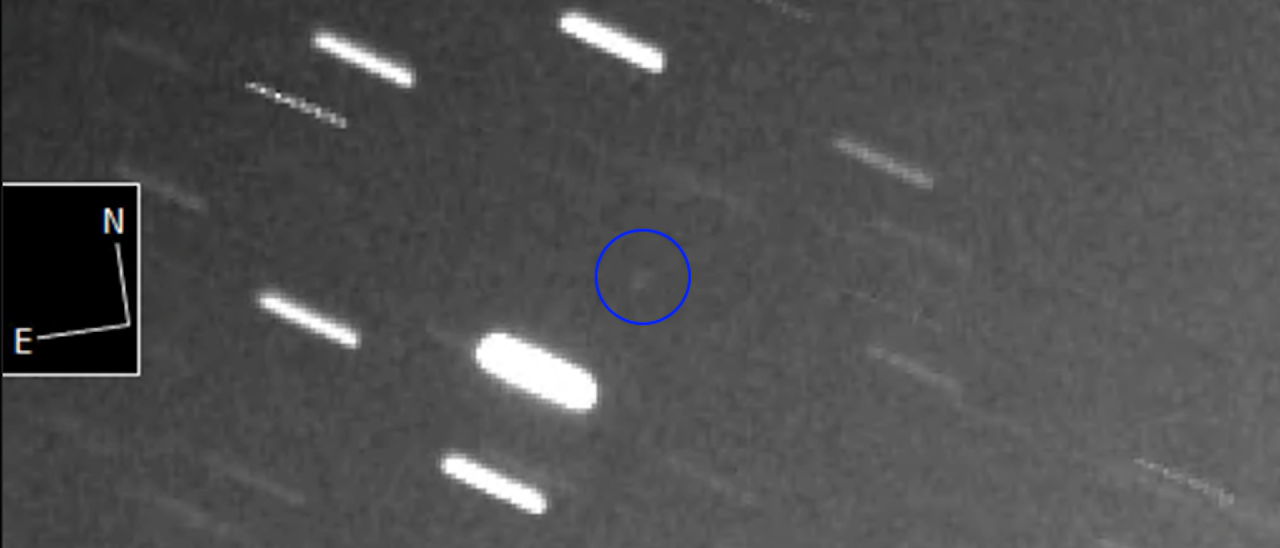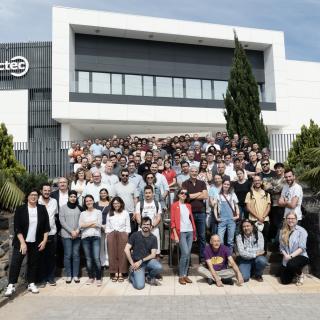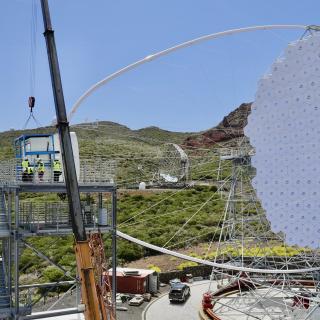The discovery of 2024 NP2 took place during the night of July 4th in images taken during the commissioning of the TST, a new telescope recently installed at the Teide Observatory.
On July 4th the first regular observations were made in the commissioning of the Transient Survey Telescope (TST), an astronomical installation produced by a public-private collaboration between the IAC and the Canary company Light Bridges, at the Teide Observatory (Tenerife). The TST is a robotic telescope with a wide field. With a 1 metre telescope and a camera using an sCMOS detector at its prime focus, it can take images with a field greater than 4 square degrees, (the equivalent of the area of 22 full moons).
Among the observations for the commissioning, the Solar System Group at the IAC coordinated the observing strategy towards regions with a high probability of finding asteroids, with the twin aims of verifying the capabilities of the instrument for the characterization of known objects, and the search for new objects not detected previously by any other telescope in the world. As a result of this programme they found over 50 candidates for unidentfied asteroids, of which half were later linked by the Minor Planet Center (MPC), a reference centre coordinated by the Harvard-Smithsonian Center for Astrophysics, to other known objects. Among the unknowns, one was put directly on the list of high priority for confirmation as a possible Near-Earth Object (NEO).
“The object discovered on the TST images showed a special motion, much more rapid than, and in a different direction from the other asteroids observed. If this was confirmed we knew that its orbit could be compatible with that of a NEO,” explained Miguel R. Alarcón, a pre-doctoral researcher in the IAC’s Solar System group, who discovered the object.
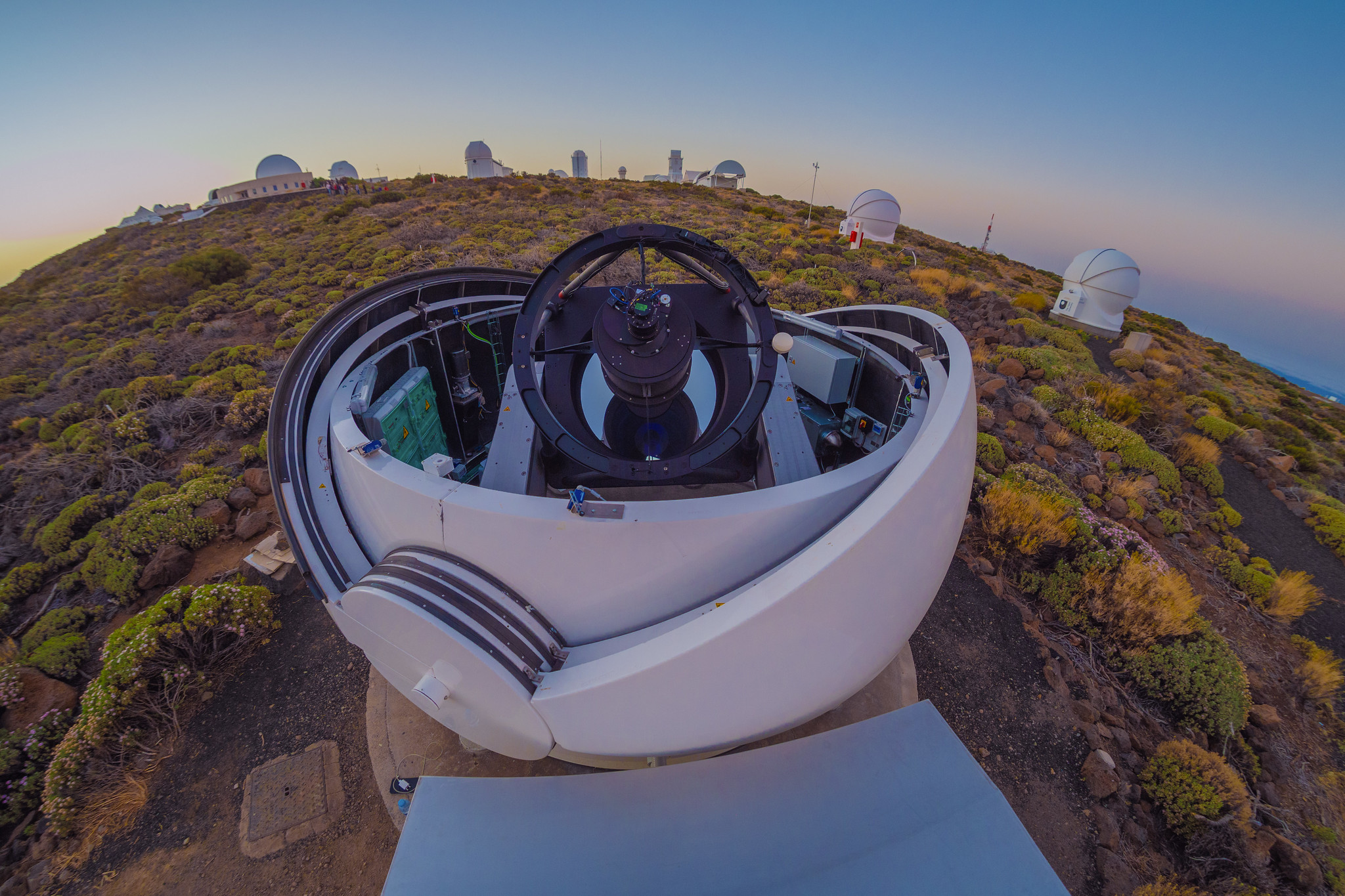
Other telescopes at the Teide Observatory were used on the same night, and on following nights to refine the orbit of this NEO candidate and inform the Minor Planet Center. “These results confirm the capacity of the Transient Survey Telescope as a quality instrument for the study and the discovery of moving objects” noted Miquel Serra-Ricart, co-discoverer of the asteroid and scientific director of the TST. On July 9th the Minor Planet Center published a circular confirming the discovery and giving the object the provisional name of 2024 NP2.
The new Near Earth Asteroid has a diameter of close to 50 metres and belongs to the Apollo group. “The Apollos are asteroids whose orbit cuts that of our planet at two points” explaind JavierLicandro, an IAC researcher. “If it had been larger, we would be talking about a potentially dangerous asteroid” he added.
2024 NP2 is the first NEO discovered by the IAC’s Solar System Group from the Teide Observatory. The ability to detect this kind of objects from the Canary Observatories will grow substantially from this year, 2024, not only with the installation of the TST, but also because of the start of operations of the Two-meter Twin Telescope (TTT) and the future ATLAS-Teide telescope, led by Javier Licandro, which will consolidate the Teide Observatory as a fundamental node of the international ATLAS network, which will act as an early warning of the danger of asteroid impacts.
Contacts at the IAC:
Miguel R. Alarcon, miguel.rodriguez [at] iac.es (miguel[dot]rodriguez[at]iac[dot]es)
Javier Licandro, jlicandr [at] iac.es (jlicandr[at]iac[dot]es)
Miquel Serra Ricart. mserra [at] iac.es (mserra[at]iac[dot]es)

